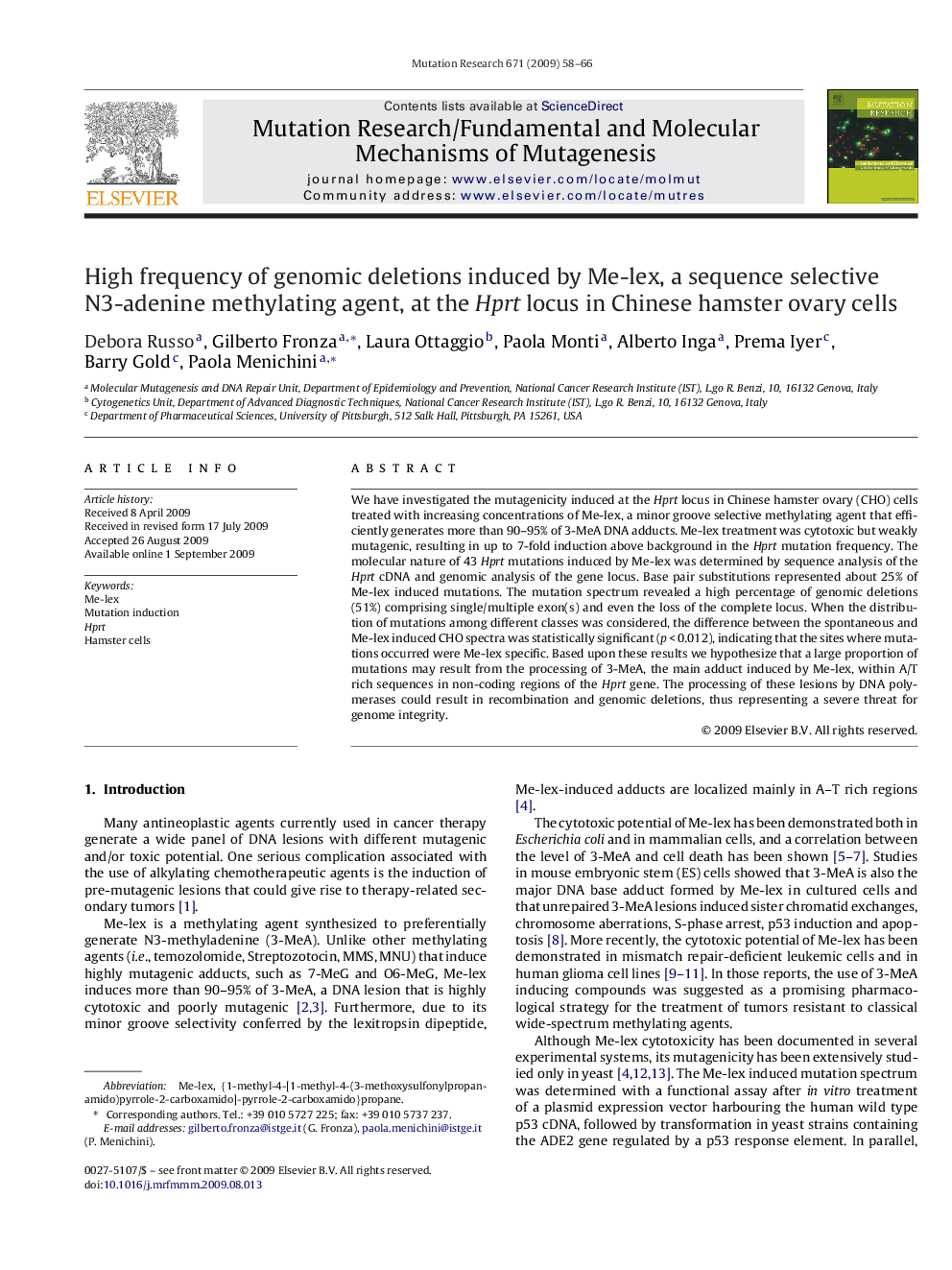| Article ID | Journal | Published Year | Pages | File Type |
|---|---|---|---|---|
| 2146846 | Mutation Research/Fundamental and Molecular Mechanisms of Mutagenesis | 2009 | 9 Pages |
We have investigated the mutagenicity induced at the Hprt locus in Chinese hamster ovary (CHO) cells treated with increasing concentrations of Me-lex, a minor groove selective methylating agent that efficiently generates more than 90–95% of 3-MeA DNA adducts. Me-lex treatment was cytotoxic but weakly mutagenic, resulting in up to 7-fold induction above background in the Hprt mutation frequency. The molecular nature of 43 Hprt mutations induced by Me-lex was determined by sequence analysis of the Hprt cDNA and genomic analysis of the gene locus. Base pair substitutions represented about 25% of Me-lex induced mutations. The mutation spectrum revealed a high percentage of genomic deletions (51%) comprising single/multiple exon(s) and even the loss of the complete locus. When the distribution of mutations among different classes was considered, the difference between the spontaneous and Me-lex induced CHO spectra was statistically significant (p < 0.012), indicating that the sites where mutations occurred were Me-lex specific. Based upon these results we hypothesize that a large proportion of mutations may result from the processing of 3-MeA, the main adduct induced by Me-lex, within A/T rich sequences in non-coding regions of the Hprt gene. The processing of these lesions by DNA polymerases could result in recombination and genomic deletions, thus representing a severe threat for genome integrity.
